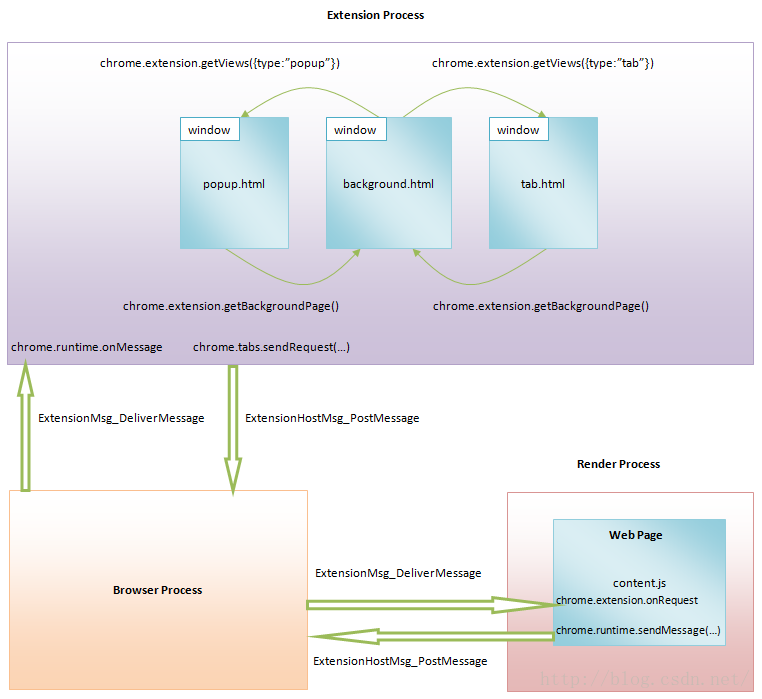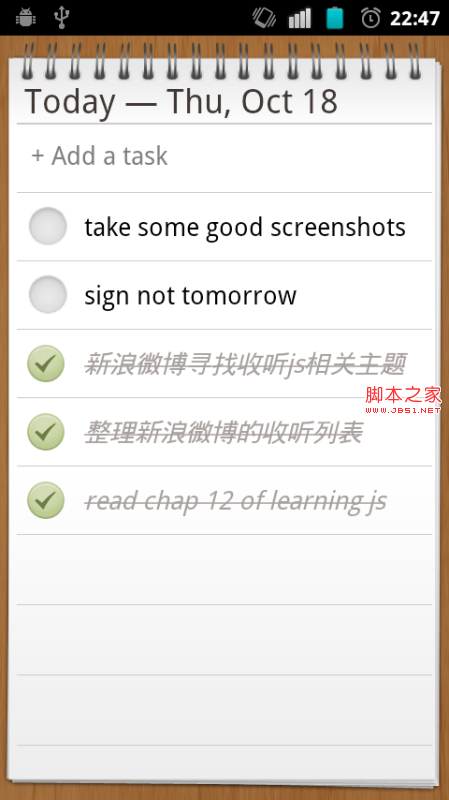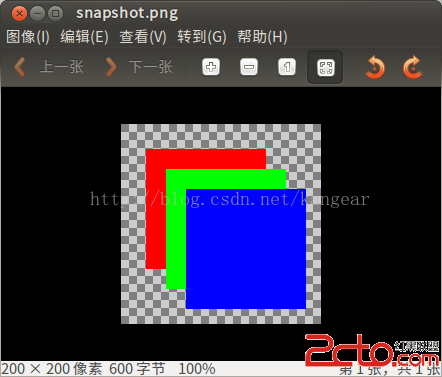編輯:關於Android編程
軟件環境:android4.4
硬件平台:marvell
之前調試過在android4.0上將屏幕開機旋轉90度,找到了契合點,調整起來還是相對簡單,只需設置一個名稱為ro.sf.hwrotation = 90即可,android的surface系統顯示的時候會讀取該系統屬性的值,從而將顯示界面旋轉,但是android4.4的surfaceflinger機制做了調整,自始至終沒有發現對該屬性的處理判斷,可能有其他的暗門,我暫時沒發現,因此就把4.0判斷屬性的那一套移植了過來,具體改動如下:
--- a/services/surfaceflinger/DisplayDevice.cpp
+++ b/services/surfaceflinger/DisplayDevice.cpp
@@ -384,6 +384,11 @@ status_t DisplayDevice::orientationToTransfrom(
int orientation, int w, int h, Transform* tr)
{
uint32_t flags = 0;
+ char property[PROPERTY_VALUE_MAX];
+ if (property_get("ro.sf.hwrotation", property, NULL) > 0) {
+ if (atoi(property) == 90)
+ orientation = DisplayState::eOrientation90;
+ }
switch (orientation) {
case DisplayState::eOrientationDefault:
flags = Transform::ROT_0;
@@ -411,6 +416,7 @@ void DisplayDevice::setProjection(int orientation,
const int w = mDisplayWidth;
const int h = mDisplayHeight;
+ char property[PROPERTY_VALUE_MAX];
Transform R;
DisplayDevice::orientationToTransfrom(orientation, w, h, &R);
@@ -418,7 +424,12 @@ void DisplayDevice::setProjection(int orientation,
if (!frame.isValid()) {
// the destination frame can be invalid if it has never been set,
// in that case we assume the whole display frame.
- frame = Rect(w, h);www.2cto.com
+ if (property_get("ro.sf.hwrotation", property, NULL) > 0) {
+ if (atoi(property) == 90)
+ frame = Rect(h, w);
+ } else {
+ frame = Rect(w, h);
+ }
}
--- a/services/surfaceflinger/SurfaceFlinger.cpp
+++ b/services/surfaceflinger/SurfaceFlinger.cpp
@@ -674,6 +674,7 @@ status_t SurfaceFlinger::getDisplayInfo(const sp
const HWComposer& hwc(getHwComposer());
float xdpi = hwc.getDpiX(type);
float ydpi = hwc.getDpiY(type);
+ char property[PROPERTY_VALUE_MAX];
// TODO: Not sure if display density should handled by SF any longer
class Density {
@@ -718,8 +719,15 @@ status_t SurfaceFlinger::getDisplayInfo(const sp
info->orientation = 0;
}
- info->w = hwc.getWidth(type);
- info->h = hwc.getHeight(type);
+ if (property_get("ro.sf.hwrotation", property, NULL) > 0) {
+ if (atoi(property) == 90) {
+ info->w = hwc.getHeight(type);
+ info->h = hwc.getWidth(type);
+ }
+ } else {
+ info->w = hwc.getWidth(type);
+ info->h = hwc.getHeight(type);
+ }
這兩個文件做完相應的修改之後,問題來了,開機以及後續的一系列顯示確實進入了橫屏模式,但是觸摸屏卻依然沒有旋轉過來,上層對touch點位的處理還是按豎屏模式處理的。。。接著嘗試修改了surface的不少地方企圖扭轉touch點位,均告失敗,最終選擇了一個能解決問題但未必最優的方案,修改Input系統的處理。改動如下:
--- a/services/input/InputReader.cpp
+++ b/services/input/InputReader.cpp
@@ -42,6 +42,7 @@
#include "InputReader.h"
#include
+#include
#include
#include
@@ -2954,6 +2955,12 @@ void TouchInputMapper::configureSurface(nsecs_t when, bool* outResetNeeded) {
int32_t naturalPhysicalWidth, naturalPhysicalHeight;
int32_t naturalPhysicalLeft, naturalPhysicalTop;
int32_t naturalDeviceWidth, naturalDeviceHeight;
+
+ char property[PROPERTY_VALUE_MAX];
+ if (property_get("ro.sf.hwrotation", property, NULL) > 0) {
+ if (atoi(property) == 90)
+ mViewport.orientation = DISPLAY_ORIENTATION_90;
+ }
switch (mViewport.orientation) {
case DISPLAY_ORIENTATION_90:
naturalLogicalWidth = mViewport.logicalBottom - mViewport.logicalTop;
@@ -4246,6 +4253,11 @@ void TouchInputMapper::cookPointerData() {
// X, Y, and the bounding box for coverage information
// Adjust coords for surface orientation.
float x, y, left, top, right, bottom;
+ char property[PROPERTY_VALUE_MAX];
+ if (property_get("ro.sf.hwrotation", property, NULL) > 0) {
+ if (atoi(property) == 90)
+ mSurfaceOrientation = DISPLAY_ORIENTATION_90;
+ }
switch (mSurfaceOrientation) {
case DISPLAY_ORIENTATION_90:
至此,觸摸屏旋轉成功。
本人是本著遇到問題解決問題的原則,也許4.4有類似4.0的關卡可以一步屬性設置即可,只是本人沒有發現這道關,上述提供的方案僅供參考以及筆者作為記錄之用,穩定性還有待考究,本人未做全面的測試。有問題的同仁可以和我探討,有更好方案的朋友還望不吝賜教。謝謝~~~
 Android強制彈出,隱藏輸入法.
Android強制彈出,隱藏輸入法.
當我們彈出一個Dialog時候,如果這個Dialog需要輸入數據,然後確定後又需要關閉輸入法,一般系統的hide,跟show方法總會有各種問題,最霸道的解決方法就是寫一個
 Chromium擴展(Extension)通信機制分析
Chromium擴展(Extension)通信機制分析
Chromium的Extension由Page和Content Script組成。如果將Extension看作是一個App,那麼Page和Content Script就是
 基於Android今日事今日畢的使用介紹
基於Android今日事今日畢的使用介紹
今日事今日畢,這是高效工作的最重原則。沒有什麼能比從待辦事項列表裡劃掉一些條目更讓人覺得舒服的事了。做為一個高效的人,您需要一個優秀的待辦事項管理工具,一個優秀的待辦事項
 Android圖形庫Skia(一)-基本測試生成PNG圖片
Android圖形庫Skia(一)-基本測試生成PNG圖片
基於淺談 Google Skia 圖形處理引擎和Skia Demo Build。 Skia是一個跨平台的圖形庫,目前使用在Android中,同樣也有PC版本,這裡測試一下